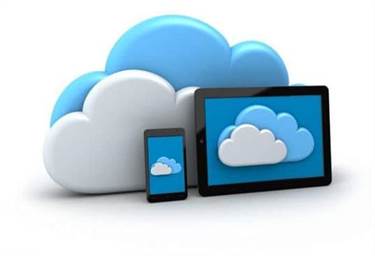When we update our status on social media, binge a new streaming series, or check our bank accounts we’re most likely using applications that are hosted by cloud services. These apps are accessed through an internet connection rather than installed on our hard drives or devices. A multi-cloud approach is a particular case of hybrid cloud in which an organization uses services from multiple public cloud providers. Multi-tenancy lets numerous customers share the same physical infrastructures or the same applications yet still retain privacy and security over their own data. With resource pooling, cloud providers service numerous customers from the same physical resources.
Complexity is controlled and the resulting systems are more manageable than their monolithic counterparts. The Cloud is a metaphor for the Internet, or more generally components and services which are managed by others. Beyond the big three there are others, such as Alibaba Cloud, IBM, Dell and Hewlett Packard Enterprise, that all want to be part of the enterprise cloud project.
Powering Customer Innovation
It is most similar to the existing IT resources with which many IT departments and developers are familiar. One of the many advantages of cloud computingis that you only pay for what you use. This allows organizations to scale faster and more efficiently without the burden of having to buy and maintain their own physical data centers and servers. Cloud computing has a rich history that extends back to the 1960s, with the initial concepts of time-sharing becoming popularized via Remote Job Entry . The “data center” model, where users submitted jobs to operators to run on mainframes, was predominantly used during this era.

The exact benefits will vary according to the type of cloud service being used but, fundamentally, using cloud services means companies not having to buy or maintain their own computing infrastructure. Cloud providers are locked in ongoing competition for cloud market share, so the public cloud continues to evolve, expand and diversify its range of services. This has led public IaaS providers to offer far more than common compute and storage instances.
Function as a service
Whether your business is early in its journey or well on its way to digital transformation, Google Cloud can help solve your toughest challenges. Cloud sandbox – A live, isolated computer environment in which a program, code or file can run without affecting the application in which it runs. Computer bureau – A service bureau providing computer services, particularly from the 1960s to 1980s. Capabilities are available over the network and accessed through standard mechanisms that promote use by heterogeneous thin or thick client platforms (e.g., mobile phones, tablets, laptops, and workstations). DevOps speeds delivery of higher quality software by combining and automating the work of software development and IT operations teams.
- A SaaS solution is often an end-user application, where both the service and the infrastructure is managed and maintained by the cloud service provider.
- Examples of SaaS are CRM systems, webmail applications, productivity tools likeJiraandConfluence, analytics tools, monitoring tools, chat applications, and more.
- For most organizations, the promise of trouble-free, cloud-based information systems remains an elusive goal.
- Some companies may be reluctant to host sensitive data in a service that is also used by rivals.
- Cloud computing service models arranged as layers in a stackThe service-oriented architecture promotes the idea of “Everything as a Service” .
- Accelerate business recovery and ensure a better future with solutions that enable hybrid and multi-cloud, generate intelligent insights, and keep your workers connected.
- In the 1950s, companies started to use large mainframe computers, but it was too expensive to buy a computer for each user.
Many companies remain concerned about the security of cloud services, although breaches of security are rare. How secure you consider cloud computing to be will largely depend on how secure your existing systems are. In-house systems managed by a team with many other things to worry about are likely to be more leaky than systems monitored by a cloud provider’s engineers dedicated to protecting that infrastructure. This concept seems simple enough when applied to the cloud, but implementation differs by service providers. Understanding what exactly it means to consume a resource adds to the complexity. The best cloud providers will help their customers clearly understand the cost of their cloud services and what they can expect to pay for consuming those services.
What Is an Example of Cloud Computing?
Furthermore, fog computing handles data at the network level, on smart devices and on the end-user client-side (e.g. mobile devices), instead of sending data to a remote location for processing. A consumer can unilaterally provision computing capabilities, such as server time and network storage, as needed automatically without requiring human interaction with each service provider. Hybrid multicloud is the use of two or more public clouds together with a private cloud environment. Today, PaaS is often built aroundcontainers, a virtualized compute model one step removed from virtual servers. Containers virtualize the operating system, enabling developers to package the application with only the operating system services it needs to run on any platform, without modification and without need for middleware.

Some companies that need to boost momentum around their digital transformation programmes might find this argument appealing; others may find enthusiasm for the cloud waning as the costs of making the switch add up. Rather than owning their own computing infrastructure or data centres, companies can rent access to anything from applications to storage from a cloud service provider. Security remains a primary concern for businesses contemplating cloud adoption — especially public cloud adoption. Public CSPs share their underlying hardware infrastructure between numerous customers, as the public cloud is a multi-tenant environment.
Disadvantages of the Cloud
Google Cloud Deploy Fully managed continuous delivery to Google Kubernetes Engine and Cloud Run. Cloud Code IDE support to write, run, and debug Kubernetes applications. VMware Engine Fully managed, native VMware Cloud Foundation software stack. Sole-Tenant Nodes Dedicated hardware for compliance, licensing, and management. Apigee Integration API-first integration to connect existing data and applications. AutoML Custom machine learning model development, with minimal effort.
Artifact Registry Universal package manager for build artifacts and dependencies. Cloud Spanner Cloud-native relational database with unlimited scale and 99.999% availability. Deep Learning Containers Containers with data science frameworks, libraries, and tools.
iPaaS (integration platform as a service) definition
You always have to trust a third-party vendor to ensure security and take care of your data. This allows organizations to focus on the deployment and management of their applications by freeing them of the responsibility https://www.globalcloudteam.com/ of software maintenance, planning, and resource procurement. Collaboration solutions such as Slack and Microsoft Teams have become vital messaging platforms that enable groups to communicate and work together effectively.

In that case, it’s down to you to ensure that the data you put in IaaS is locked down appropriately. In other words, clouds are secure, but organizations are often not using them securely. Security is a shared responsibility, so detailing roles and responsibilities is critical to using the cloud securely. Private clouds are reserved for specific clientele, usually one business or organization. Many private cloud computing services are provided on a private network.
Using FinOps to Make it Rain Savings in the Cloud
In the SaaS model, the service provider manages all the hardware, middleware, application software, and security. Also referred to as ‘hosted software’ or ‘on-demand software’, SaaS makes it easy for enterprises to streamline their maintenance what is cloud computing and support. SaaS or software as a service allows users to access a vendor’s software on cloud on a subscription basis. In this type of cloud computing, users don’t need to install or download applications on their local devices.
